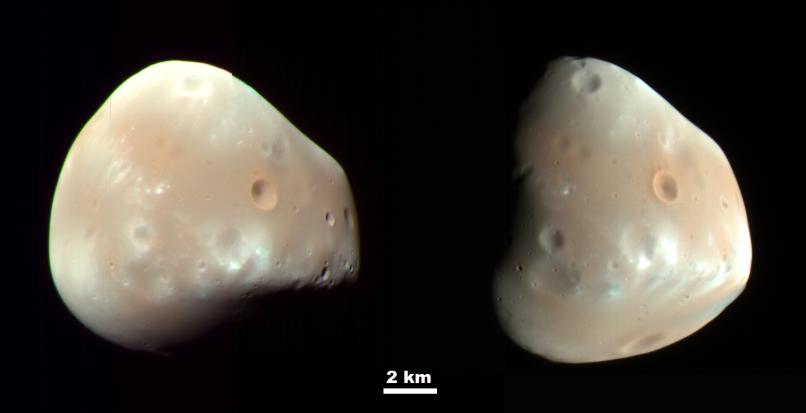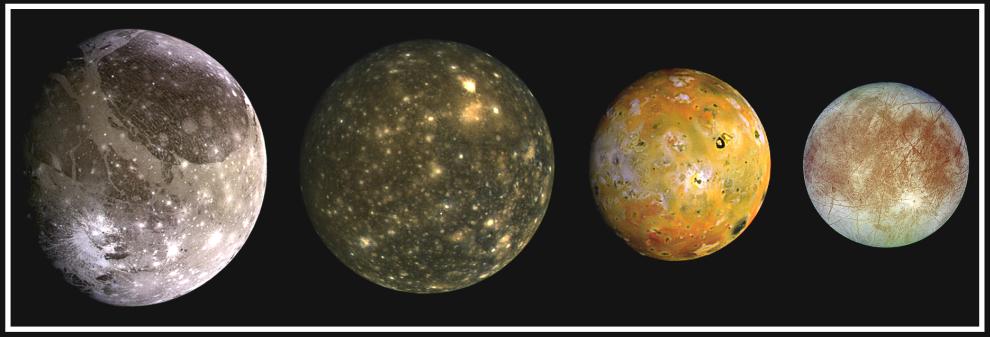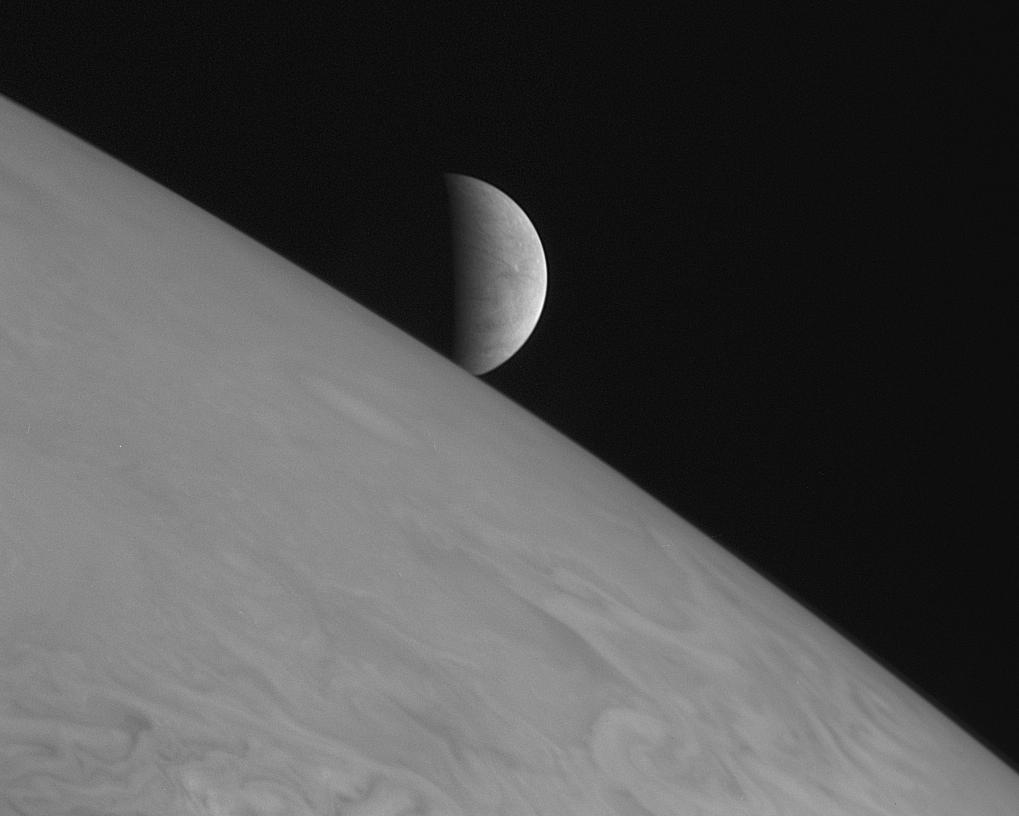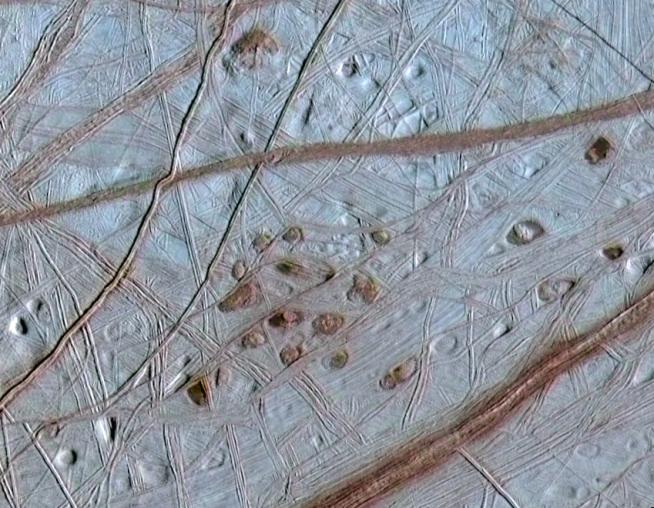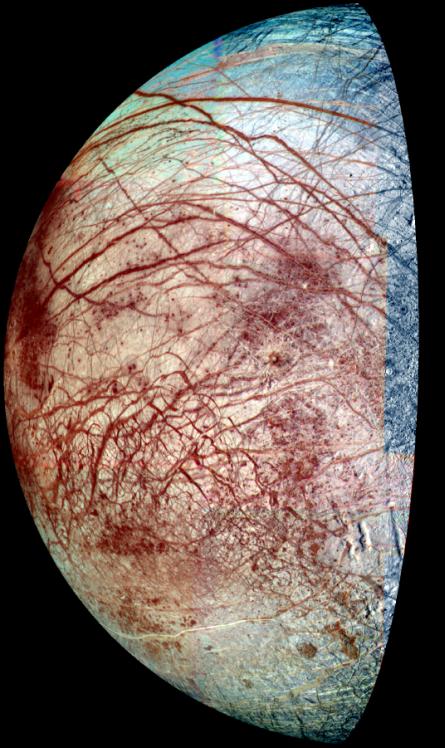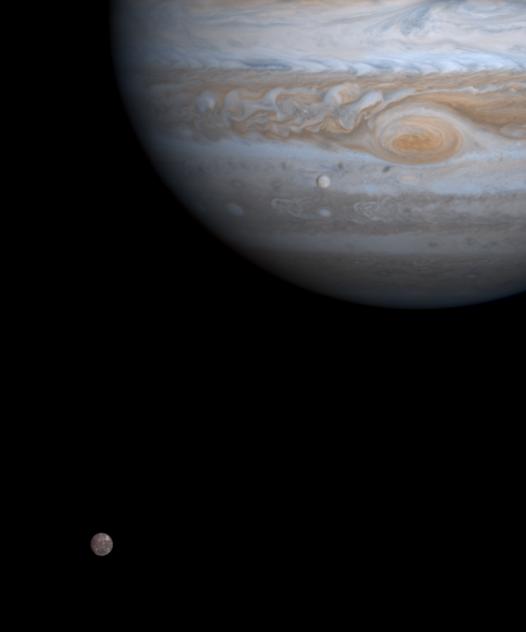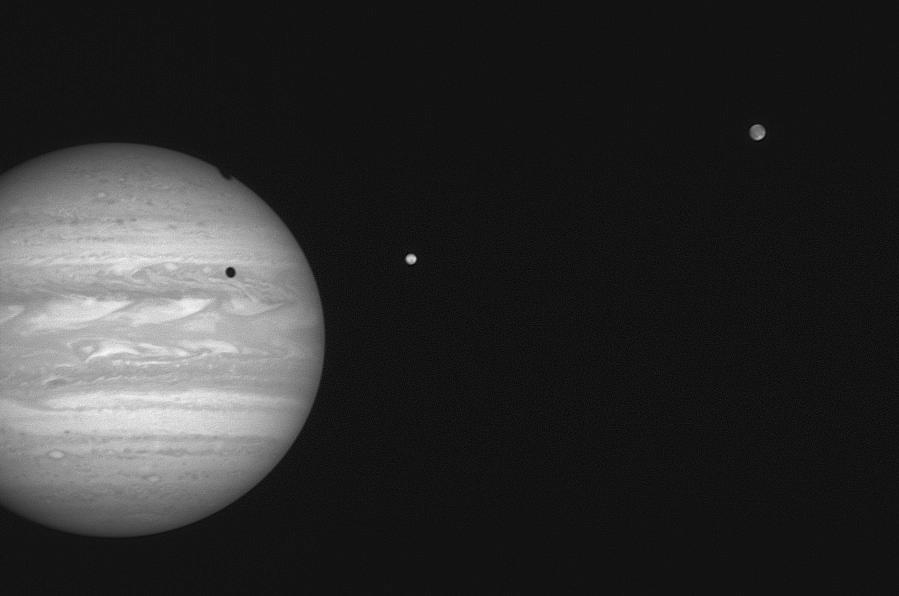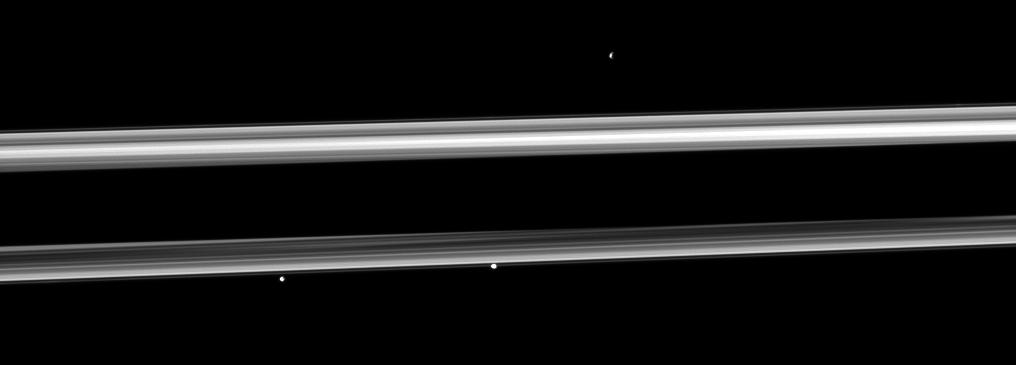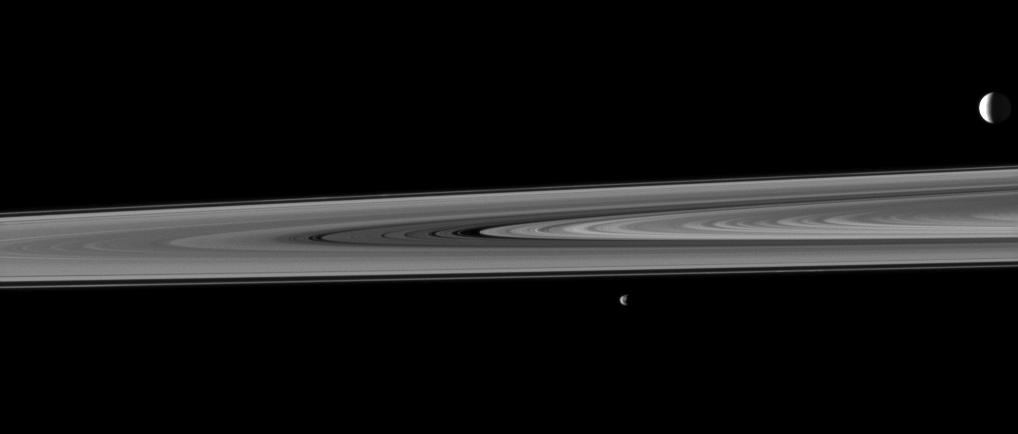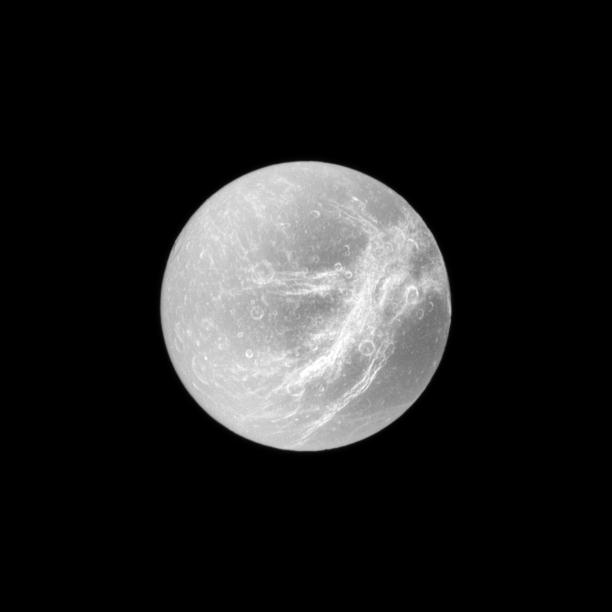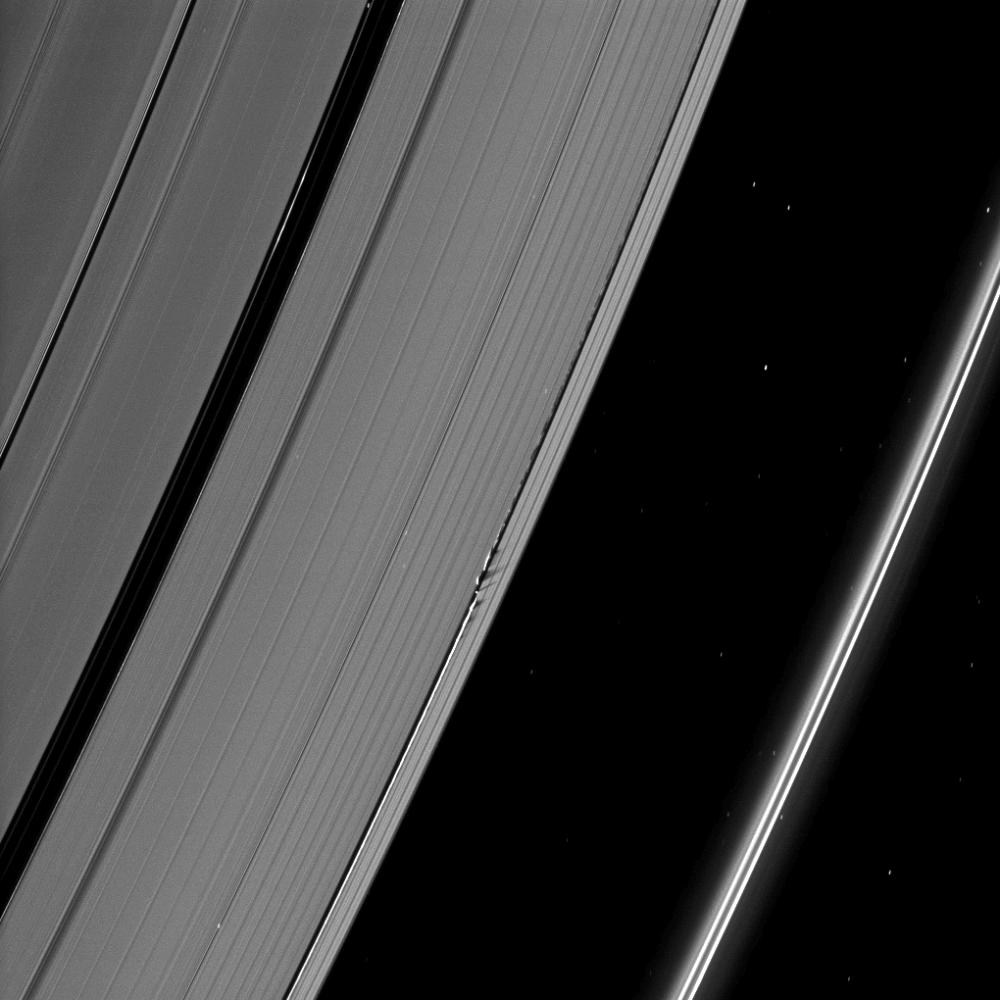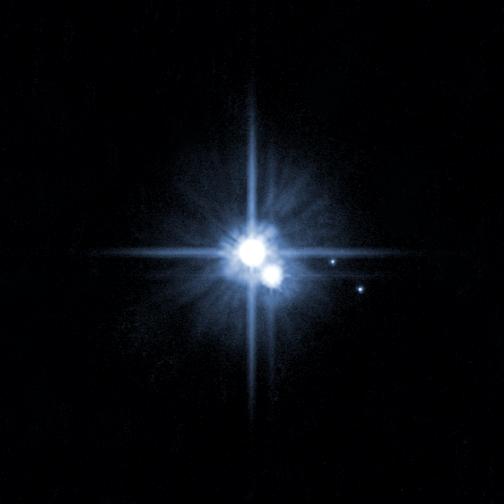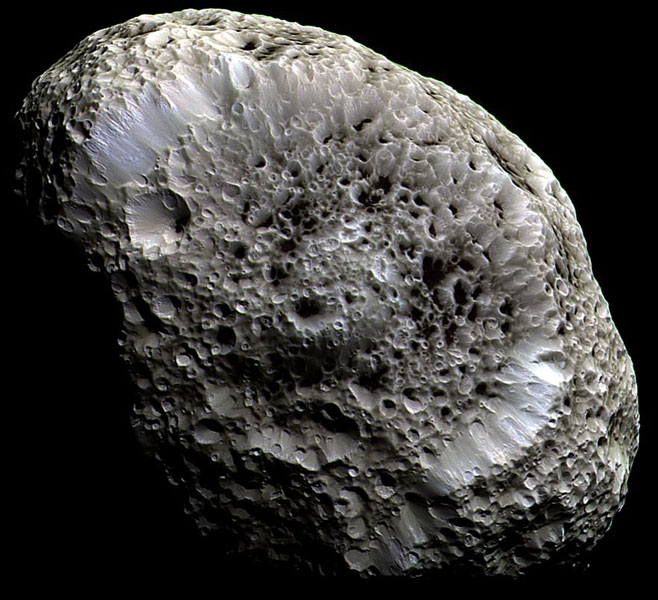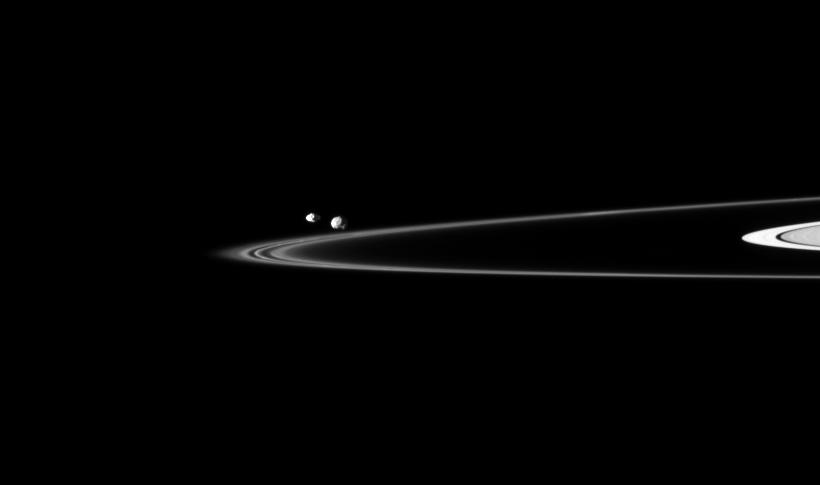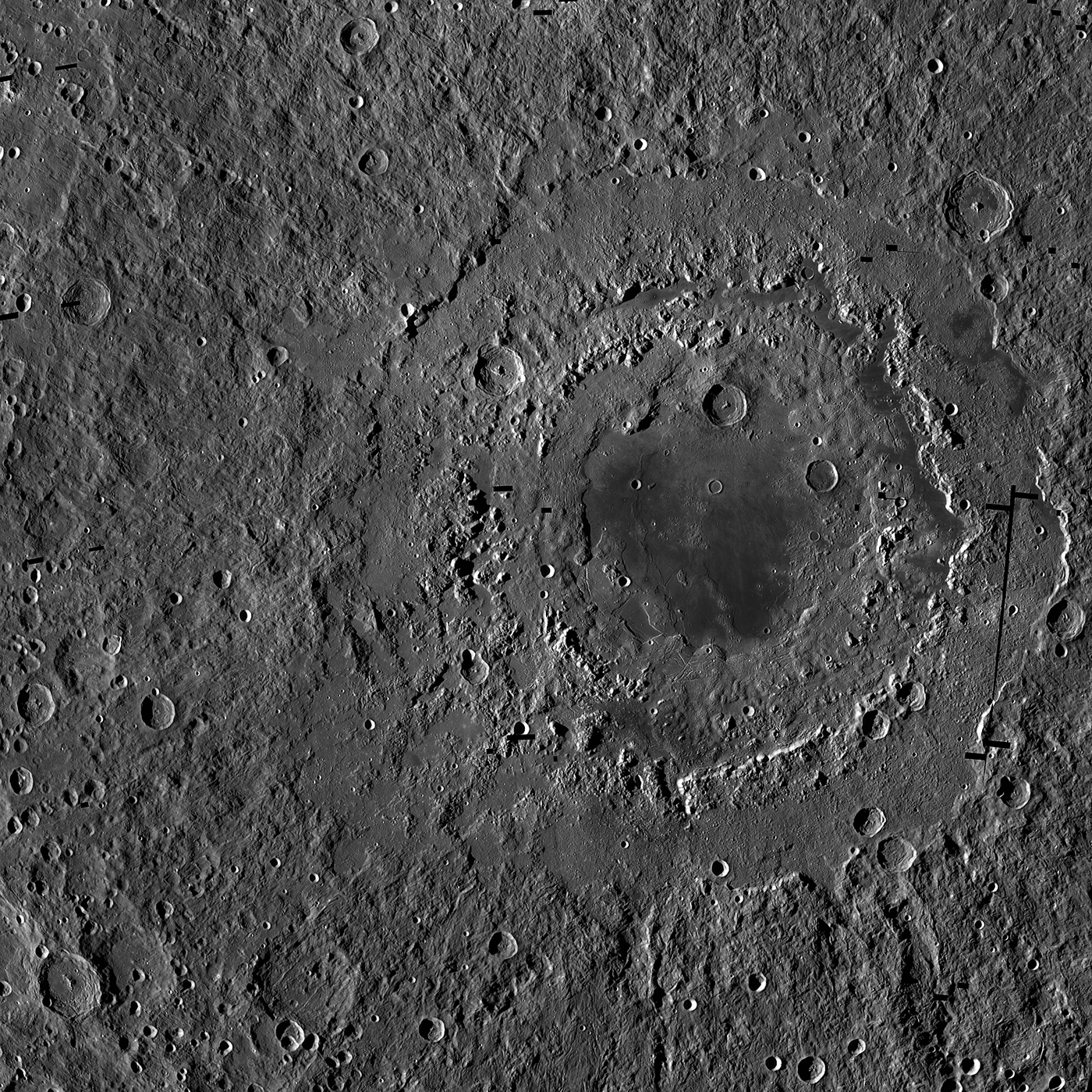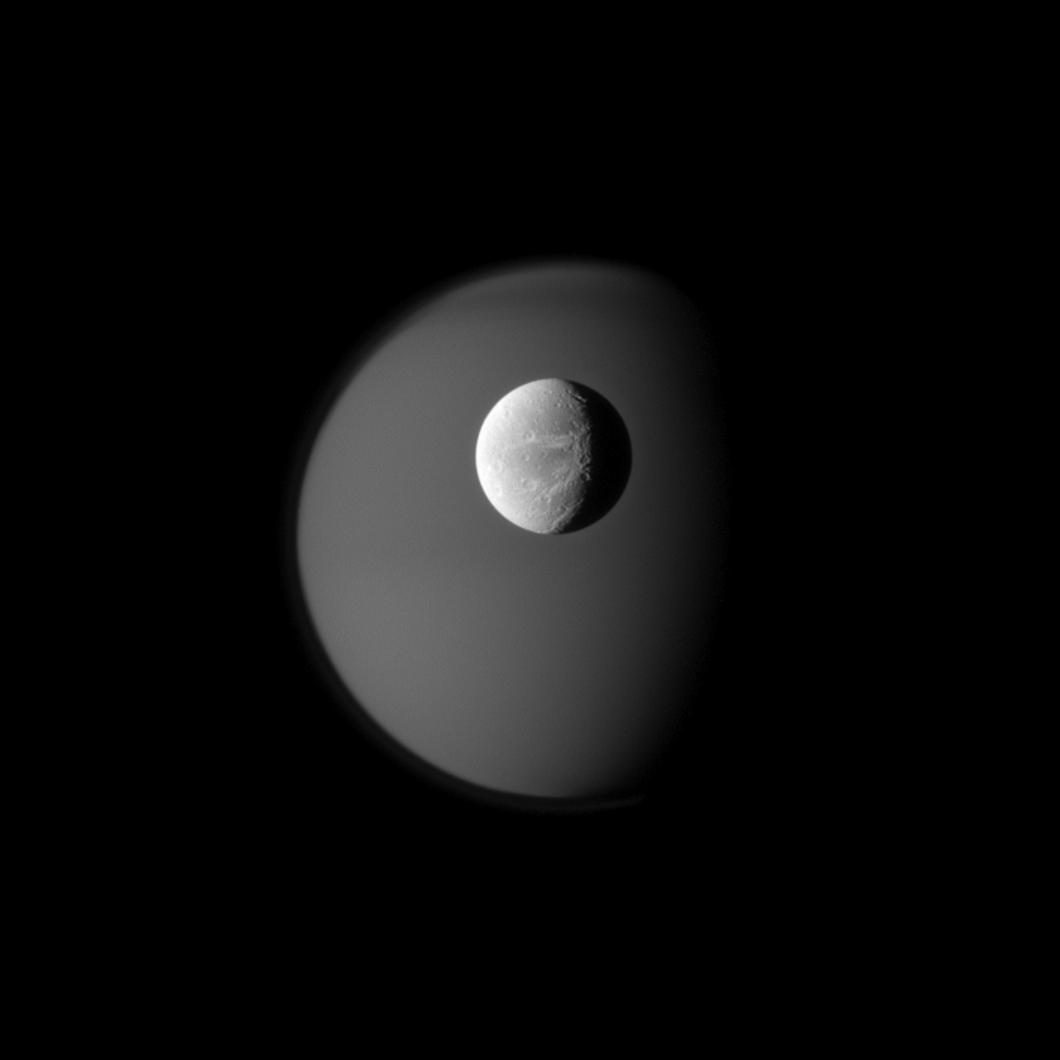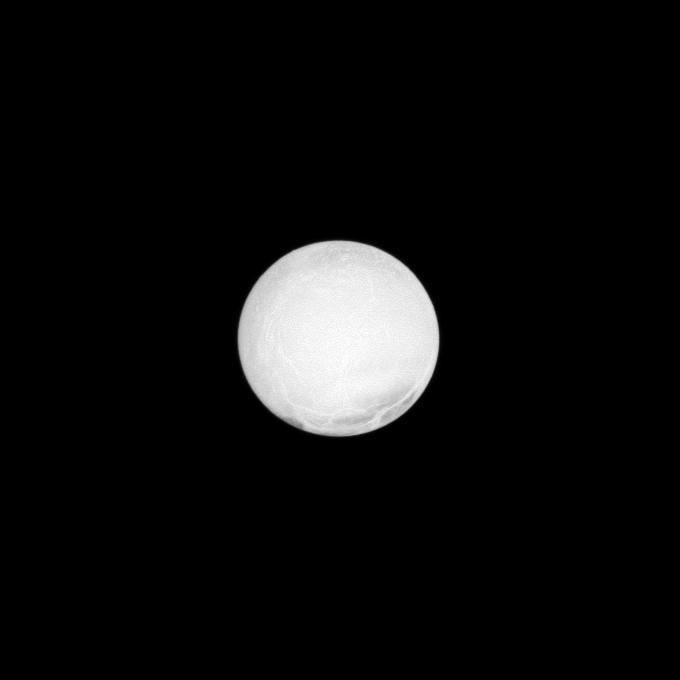Page 1 of 5
Moons of our Solar System
Posted: Sat May 08, 2010 1:02 pm
by owlice
__________________________________________________________________
Here are some of the many moons of our solar system.
All images are clickable for better viewing.
Please feel free to add your own favorites!
__________________________________________________________________
Deimos (Mars)
http://photojournal.jpl.nasa.gov/catalog/PIA11826
Creit: NASA/JPL-Caltech/University of Arizona
[/url]
Phobos (Mars)
Phobos over the Martian limb.
http://photojournal.jpl.nasa.gov/catalog/PIA04589
Credit: NASA/JPL/Malin Space Science Systems
[/url]
Comparison of Amalthea to Io (Jupiter)
http://photojournal.jpl.nasa.gov/catalog/PIA01626
Credit: NASA/JPL/Cornell University
[/url]
The Galilean Satellites (Jupiter)
http://photojournal.jpl.nasa.gov/catalog/PIA00601
Credit: NASA/JPL/DLR
[/url]
Europa Rising (Jupiter)
http://photojournal.jpl.nasa.gov/catalog/PIA09361
Credit: NASA/Johns Hopkins University Applied Physics Laboratory/Southwest Research Institute
[/url]
Ruddy "Freckles" on Europa (Jupiter)
http://photojournal.jpl.nasa.gov/catalog/PIA03878
Credit: NASA/JPL/University of Arizona/University of Colorado
[/url]
Europa's Frozen Surface (Jupiter)
http://photojournal.jpl.nasa.gov/catalog/PIA02590
Credit: NASA/JPL/University of Arizona
[/url]
Europa and Callisto under the watchful gaze of Jupiter (Jupiter)
http://photojournal.jpl.nasa.gov/catalog/PIA02861
NASA/JPL/University of Arizona
[/url]
Io and Ganymede Jupiter)
Credit:
http://photojournal.jpl.nasa.gov/catalog/PIA09239
NASA/Johns Hopkins University Applied Physics Laboratory/Southwest Research Institute
[/url]
Tiny Trio: Pandora, Prometheus and Epimetheus (Saturn)
http://photojournal.jpl.nasa.gov/catalog/PIA12587
Credit: NASA/JPL/Space Science Institute
[/url]
The Space Between (Saturn)
Enceladus in the background and the smaller moon Janus in the fore
http://photojournal.jpl.nasa.gov/catalog/PIA12550
NASA/JPL/Space Science Institute
[/url]
Dione (Saturn)
http://photojournal.jpl.nasa.gov/catalog/PIA12553
Credit: NASA/JPL/Space Science Institute
[/url]
Daphnis (Saturn)
Tiny moon Daphnis disrupts the rings it's between enough to make them cast shadows; the moon is the tiny white dot in the midst of the disruption.
http://photojournal.jpl.nasa.gov/catalog/PIA12622
NASA/JPL/Space Science Institute
[/url]
Tethys (Saturn)
http://photojournal.jpl.nasa.gov/catalog/PIA11624
Credit: NASA/JPL/Space Science Institute
[/url]
Oberon (Uranus)
http://photojournal.jpl.nasa.gov/catalog/PIA00034
Credit: NASA/JPL
[/url]
Mini moons (Uranus)
http://www.hubblesite.org/newscenter/ar ... 9/image/a/
Credit: NASA, M. Showalter (Stanford University/NASA Ames Research Center), J. Lissauer (NASA Ames Research Center)
[/url]
Triton (Neptune)
http://www.cfa.harvard.edu/news/2010/su201019.html
Credit: NASA/Voyager 2
(
http://asterisk.apod.com/vie ... 31&t=19332)
Triton (Neptune)
Parts of this composite image are computer-generated; please read the source page for more information.
http://photojournal.jpl.nasa.gov/catalog/PIA00344
Credit: NASA/JPL/USGS
[/url]
Charon, Nix, and Hydra with Pluto (Pluto)
http://photojournal.jpl.nasa.gov/catalog/PIA12453
Credit: NASA, ESA, H. Weaver (JHUAPL), A. Stern (SwRI), and the HST Pluto Companion Search Team
[/url]
Re: Moons of our Solar System
Posted: Sat May 08, 2010 3:32 pm
by neufer
http://www.washingtonpost.com/wp-dyn/content/article/2010/05/06/AR2010050606284.html wrote:
BUCARAMANGA, COLOMBIA -- <<
Colombians have long known Antanas Mockus for his antics, such as the time he mooned an auditorium full of rowdy students during his stint as a university president. And how he got married atop an elephant. Then there were the occasions during his two terms as Bogota mayor when he donned a spandex suit and became Super Citizen to lecture residents about civics. Some have called him "a little strange," as Mockus acknowledged Thursday in an interview. Soon, Colombians may be calling him president.>>
- By Juan Forero, Washington Post Staff Writer, Friday, May 7, 2010
http://en.wikipedia.org/wiki/Antanas_Mockus wrote:
<<Aurelijus Rutenis
Antanas Mockus Šivickas (born 25 March 1952 in Bogotá), is a Colombian mathematician, philosopher, and politician. The son of Lithuanian immigrants, he left his post as the dean of the National University of Colombia in Bogotá in 1993, and later that year ran a successful campaign for mayor. He proceeded to preside over Bogotá as mayor for two terms, during which he became known for springing surprising and humorous initiatives upon the city's inhabitants. These tended to involve grand gestures, including local artists or personal appearances by the mayor himself — taking a shower in a commercial about conserving water. He is fluent in four languages: Spanish, English, French and Lithuanian.>>
Re: Moons of our Solar System
Posted: Sat May 08, 2010 4:36 pm
by bystander
neufer wrote:Antanas Mockus
Whaaa???
Re: Moons of our Solar System
Posted: Sat May 08, 2010 5:07 pm
by BMAONE23
Owlice,
Thanks for Mooning us

Re: Moons of our Solar System
Posted: Sat May 08, 2010 5:42 pm
by RJN
Re: Moons of our Solar System
Posted: Sat May 08, 2010 11:44 pm
by BMAONE23
Re: Moons of our Solar System
Posted: Sun May 09, 2010 8:11 am
by owlice
BMAONE23 wrote:Owlice,
Thanks for Mooning us

My pleasure, and I see you give as good as you get, and with an action shot, no less!

The Daphnis pic got a WOW out of me (in big red letters); I don't know that I had seen those shadows -- from the waves of the little rock's travels -- before. I'd seen images of the disturbances that some of the little moons make in the rings, but not the shadows from those disturbances.
So many interesting moons! Moons which look like potatoes and sponges and translucent marbles, moons big, moons small, moons sulphurous, smooth, and rough. What a solar system!
Re: Moons of our Solar System
Posted: Sun May 09, 2010 1:16 pm
by Hofi
I like this images of Saturn's moons and the gravitational influenced turbulences of the rings. I would be glad to see such an image as an APOD!

Re: Moons of our Solar System
Posted: Sun May 09, 2010 2:15 pm
by wonderboy
This is a great post. Theres something creepy to me, about how the moon is moving above this post! Its kinda scary.
Paul.
Re: Moons of our Solar System
Posted: Sun May 09, 2010 4:20 pm
by neufer
wonderboy wrote:There's something creepy to me, about how the moon is moving above this post!
It's as if the right eye was processing the image before the left thereby making it 3D and convex.
However, it is still 3D and convex upside down (and, presumably, time reversed...
I think).
So is that primarily because:
- 1) The light movement from right to left makes the right eye register first?
2) We know, a priori, that it is convex?
3) Both?
4) Neither?
Re: Moons of our Solar System
Posted: Mon May 10, 2010 1:53 pm
by owlice
Petite Pair Beyond Rings: Pandora and Epimetheus (Saturn)
http://photojournal.jpl.nasa.gov/catalog/PIA12627
Credit: NASA/JPL/Space Science Institute
[/url]
Re: Moons of our Solar System
Posted: Mon May 10, 2010 4:30 pm
by BMAONE23
Be careful Owlice...your epimetheus is showing
Re: Moons of our Solar System
Posted: Mon May 10, 2010 6:35 pm
by owlice
BMAONE23 wrote:Be careful Owlice...your epimetheus is showing
AGAIN?! I thought I fixed that!
(Thanks for letting me know!

)
PS: Two moons making waves in the rings
Posted: Fri Jun 18, 2010 6:17 pm
by bystander
Two moons making waves in the rings
Planetary Society Blog | 18 June 2010
Emily Lakdawalla wrote:
Just a pretty picture post, a dramatic Cassini shot on the outer edge of the A ring captured earlier this month. Cassini caught both Daphnis and Pan in one view, along with the cool wave structures that both make in the rings.
Cassini pointed at the outer edge of the A ring to take this photo on June 3, 2010. Although nearly an Earth year had passed since Saturn's equinox, the Sun is still at a low angle to the rings, so the waves at the edge of the Keeler gap excited by Daphnis are highlighted by their long shadows (lower right corner of the image). In the upper left, Pan appears within the Encke gap along with the faint ringlets that accompany Pan in its orbit.
(NASA/JPL/SSI)
Re: PS: Two moons making waves in the rings
Posted: Sat Jun 19, 2010 12:54 am
by rstevenson
In the bottom-right corner, it looks as if Daphnis creates a disturbance ahead of itself as well as behind. Not the expected thing, since we naturally interpret this as wave action similar to a boat's wake. But of course gravity reaches forward as well as backward, so disturbing though it might appear, it makes sense.
Rob
Re: PS: Two moons making waves in the rings
Posted: Sat Jun 19, 2010 1:11 am
by owlice
bystander, great pic!
Rob, yes, Daphnis disrupts the ring coming and going; see here:
http://photojournal.jpl.nasa.gov/catalog/PIA12622
Re: PS: Two moons making waves in the rings
Posted: Sat Jun 19, 2010 7:46 pm
by rstevenson
Thanks Hooter Girl.

Rob
BA: Zoom in on a HUGE lunar bullseye
Posted: Sun Jun 20, 2010 11:45 am
by bystander
Zoom in on a HUGE lunar bullseye
Discover Blogs | Bad Astronomy | 19 June 2010
If you’ve ever wanted to download a ginormous image of the Moon and explore it, now’s your chance: the Lunar Reconnaissance Orbiter Camera folks have released a monster
185 megapixel image of one of the biggest smackdowns on the Moon:
Orientale Basin.
Yowza! Click to get the 1400 x 1400 pixel PNG, or you can try to swallow the 122 Mb TIF at the full resolution of
13,590 x 13,590 pixels!
Orientale is a vast impact basin, the hole left by an asteroid that hit the Moon about three billion years ago. Looking like a humongous bulls-eye, it’s a multi-ring crater, and the outer ramparts are a full 950 km (590 miles) across. That’s
half again bigger than my home state of Colorado.
To give you an idea of just how big this is — and also, to be honest, to scare myself a little — I superimposed the picture of Orientale on a map of the United States. This is to scale, folks:
Holy. Frakking. Crap.
Whatever hit the Moon to create this basin must have been about 100 kilometers (60 miles) across. That would have made it
1000 times the mass of the asteroid that wiped out the dinosaurs. If something like that hit the Earth today, there would be no life left on our planet. At all. Happily, nothing that big is headed our way.
Oh, but what a sight that must have been. An impact that size would release the energy of 100 billion one-megaton hydrogen bombs. It would have been visible across the solar system! Amazingly, though, such events were a little more common back then; the solar system used to be filled with monster asteroids itching for a fight. That period of bombardment ended billions of years ago, though. Yay.
The image from LROC is pretty amazing. It’s actually a mosaic of quite a few individual images from
the Wide Angle Camera. The resolution is about 100 meters per pixel in the full image. If you don’t want to download that big picture,
you can interactively zoom in on the basin on the LROC website. The black areas are where data are missing (or where the Moon is modest, perhaps).
You can see that Orientale is not like other craters. The event was so huge that it punched right into the Moon, like a fist through a styrofoam sheet, and the crater left behind got partially filled up with lava. That’s why there’s no obvious rim and bowl shape you usually see in smaller craters. The multiple rings are not fully understood — it’s rather hard to model an impact that releases the energy of a few billion nuclear bombs — though they are common in giant impacts. It may be that waves of energy blasting out from the impact event ripple through the ground like earthquakes, and where they rebound and interact you get those rings.
Since the original event, other, smaller impacts have dotted it, but again I refer you to the map of the US above to see what "smaller" means in this case! Some are bigger than cities and counties. Surrounding the inner part of the basin is terrain loaded with scarps (steep cliffs), gullies cut by flowing lava, and cracks caused by the shifting landscape. It’s really worth your time to simply scroll around the interactive map and see what’s there. And remember, at highest zoom each pixel is about the size of a football stadium.
Friday, June 18, 2010 was the first anniversary of the launch of LRO. Consider this image a fantastic present to us!
Re: BA: Zoom in on a HUGE lunar bullseye
Posted: Sun Jun 20, 2010 1:10 pm
by owlice
WOW!!!! Very cool!!! And WOW!!!!
JPL: Dione and Ghostly Titan
Posted: Mon Jun 21, 2010 3:31 pm
by bystander
Dione and Ghostly Titan
NASA JPL | Cassini Equinox Mission | 21 June 2010
The surface of Saturn's moon Dione is rendered in crisp detail against a hazy, ghostly Titan.
A portion of the "wispy" terrain of Dione's trailing hemisphere can be seen on the right (see
PIA12553: Wispy Marble). Also visible in this image are hints of atmospheric banding around Titan's north pole. To learn more about the northern bands, (see
PIA08868: Bands of Titan and
PIA08928: Northern Bands). This view looks toward the Saturn-facing hemisphere of Dione (1,123 kilometers, or 698 miles across) and Titan (5,150 kilometers, or 3,200 miles across).
The image was taken in visible blue light with the Cassini spacecraft narrow-angle camera on April 10, 2010. The view was acquired at a distance of approximately 1.8 million kilometers (1.1 million miles) from Dione and 2.7 million kilometers (1.7 million miles) from Titan. Scale in the original image was 11 kilometers (7 miles) per pixel on Dione and 16 kilometers (10 miles) on Titan. The image has been magnified by a factor of 1.5 and contrast-enhanced to aid visibility.
Credit: NASA/JPL/SSI
Re: JPL: Dione and Ghostly Titan
Posted: Mon Jun 21, 2010 4:46 pm
by owlice
What a great picture!!! Thank you for sharing it!!!
Re: Moons of our Solar System
Posted: Tue Jun 22, 2010 2:04 pm
by owlice
June's Crescent Moon
http://www.galacticimages.com
Copyright: John Chumack
Re: Moons of our Solar System
Posted: Tue Jun 22, 2010 7:58 pm
by bystander
Enceladus at Low Phase
NASA JPL | Cassini Equinox Mission | 22 June 2010
PIA12660: Enceladus at Low Phase
The highly reflective surface of Saturn's moon Enceladus is almost completely illuminated in this Cassini spacecraft image taken at a low phase angle.
The phase angle, or Sun-Enceladus-spacecraft angle, for this view is 2 degrees. Enceladus is one of the most reflective bodies in the solar system because it is constantly coated by fresh, white ice particles. See Occulting Enceladus and Icy Enceladus to learn more.
This view looks toward the trailing hemisphere of Enceladus (504 kilometers, or 313 miles across). North on Enceladus is up. The view was acquired at a distance of approximately 423,000 kilometers (263,000 miles) from Enceladus. The image was taken in visible light with the Cassini spacecraft narrow-angle camera on Oct. 14, 2009. Image scale is 3 kilometers (2 miles) per pixel.
Credit: NASA/JPL/SSI
Re: Moons of our Solar System
Posted: Tue Jun 22, 2010 10:49 pm
by owlice
Pretty shiny!
How is Enceladus pronounced? I've heard two pronunciations for it, one of which makes it sound like Mexican food (emphasis on the third syllable), and another which makes it sound as though it may be a new car model (emphasis on the second syllable).
However it's spoken, it's a cool moon!
Re: Moons of our Solar System
Posted: Tue Jun 22, 2010 11:24 pm
by bystander
